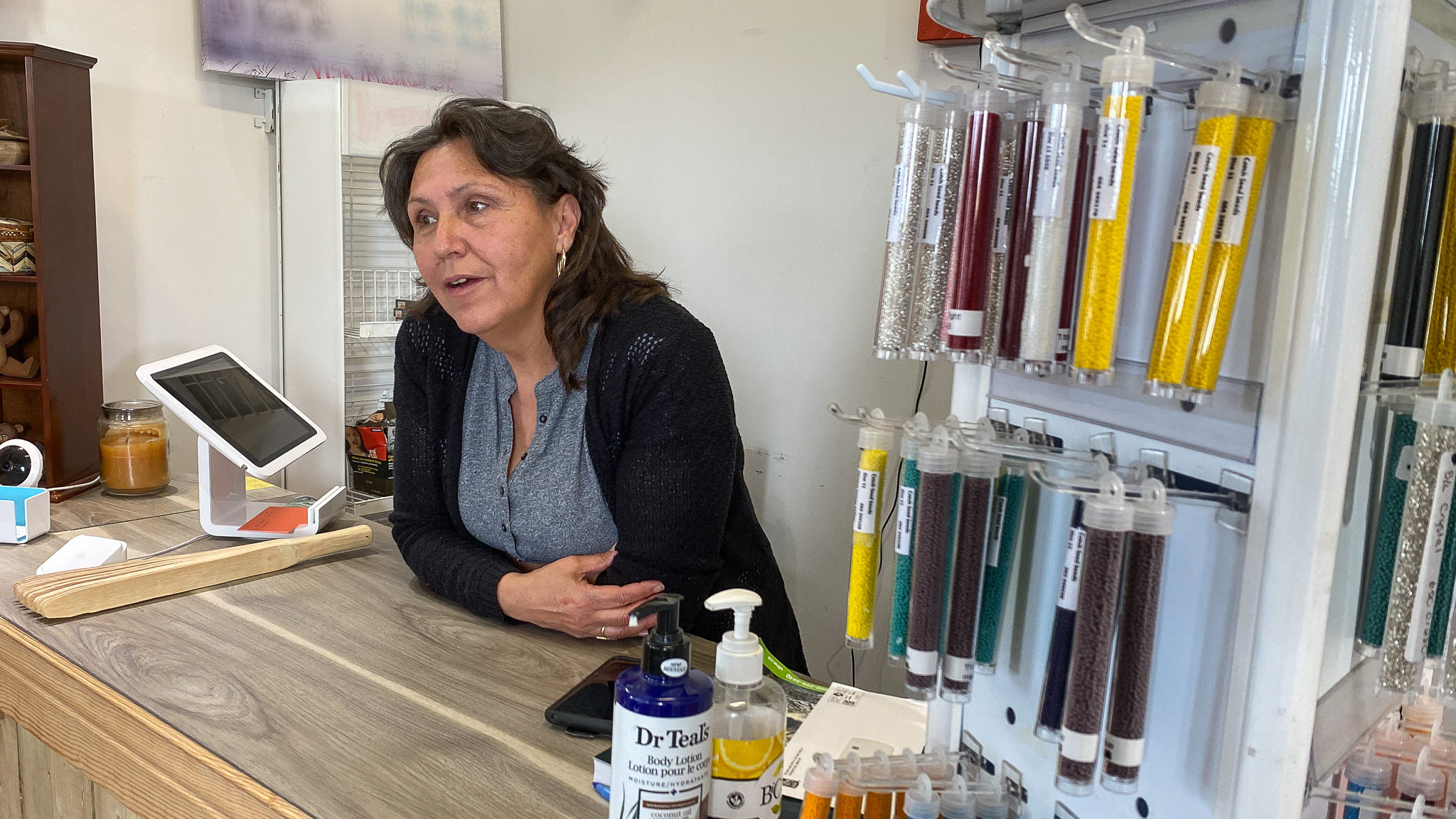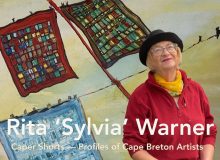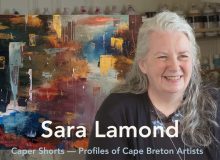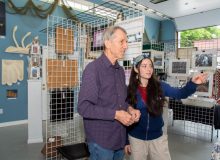Rosie Johnson — Ku’Ku’Kwes’ Mi’kmaw Craft and Design
Rosie Johnson opened her shop two years ago during the COVID 19 pandemic when the world slowed down and stopped. For anyone who knows Rosie, slowing down and stopping doesn’t come easily to her. It seemed like a good time to take a big step, like getting her craft business out of her bedroom and into an actual store of its own.
As to the name of her Potlotek shop, Ku’Ku’Kwes’ Mi’kmaw Craft and Design, that is about her mother. Ku’Ku’Kwes’ means owl in Mi’kmaw, Rosie Johnson tells us in her shop. “My mom, she always loved owls. She had a lot of owls. When she passed on, I got her owls,” she told us. “I was sitting in the living room and trying to think of what to name the store, and her owls kept popping up at me.” And that’s how the store got its name. “It just named itself like that.”
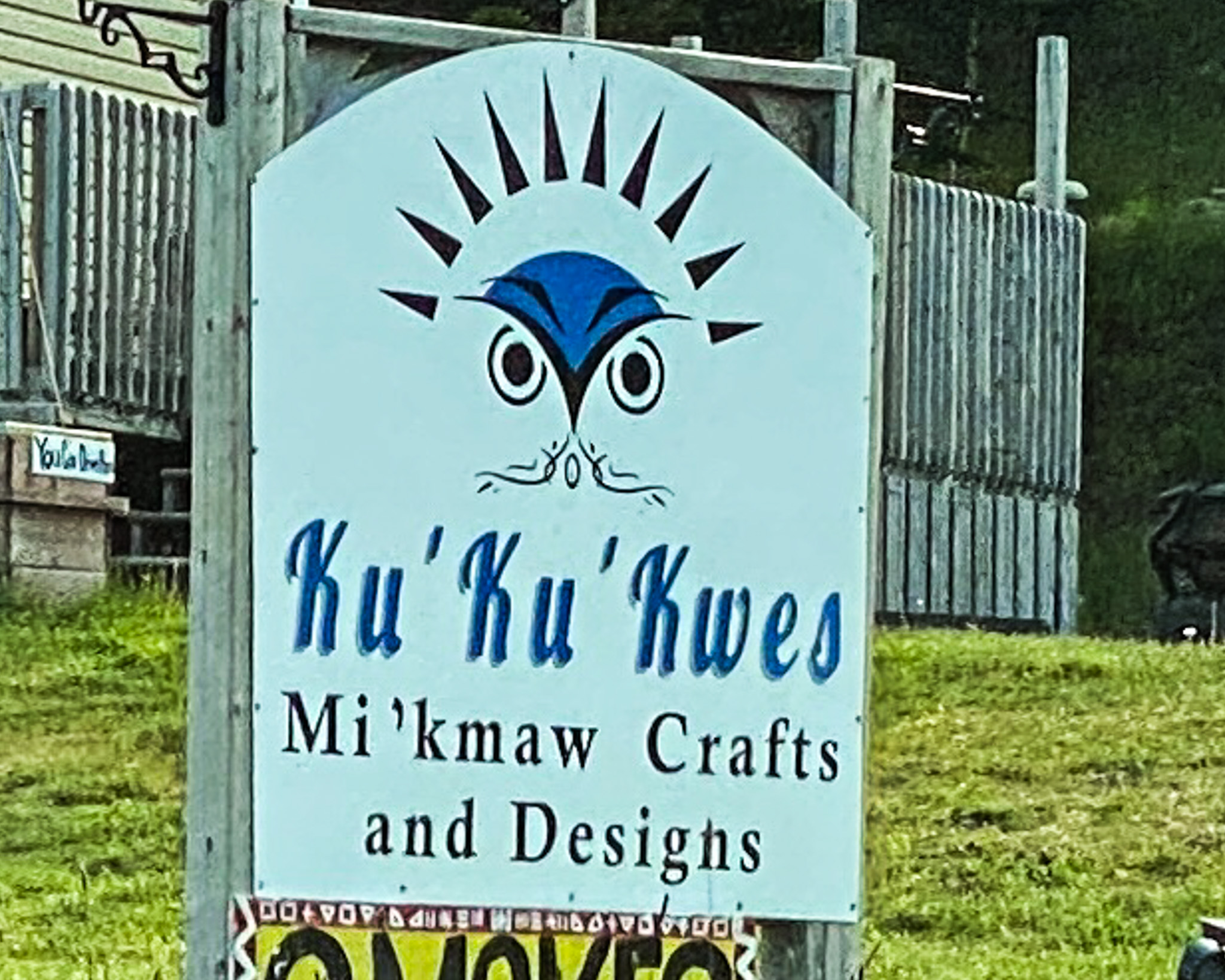
A hand into everything
As to what’s in her shop, that takes some telling. “I have my hand in everything,” Rosie told us. Then we got the whirlwind tour of everything she makes and sells at her shop.
Pointing out what’s in her physical shop, as well as what’s on her phone and tablet, she showed us: beaded earrings, medallions, and wristlets; dream catchers and Christmas ornaments; musical instruments like drums, and the clandestine ji’kmaqn that was used to keep rhythm when musical instruments were banned for the Mi’kmaw.
But what she is known for most are the traditional clothes she makes: ribbon skirts and shirts, baptismal dresses, and (ceremonial) suits. “I do a lot of sewing,” she said.
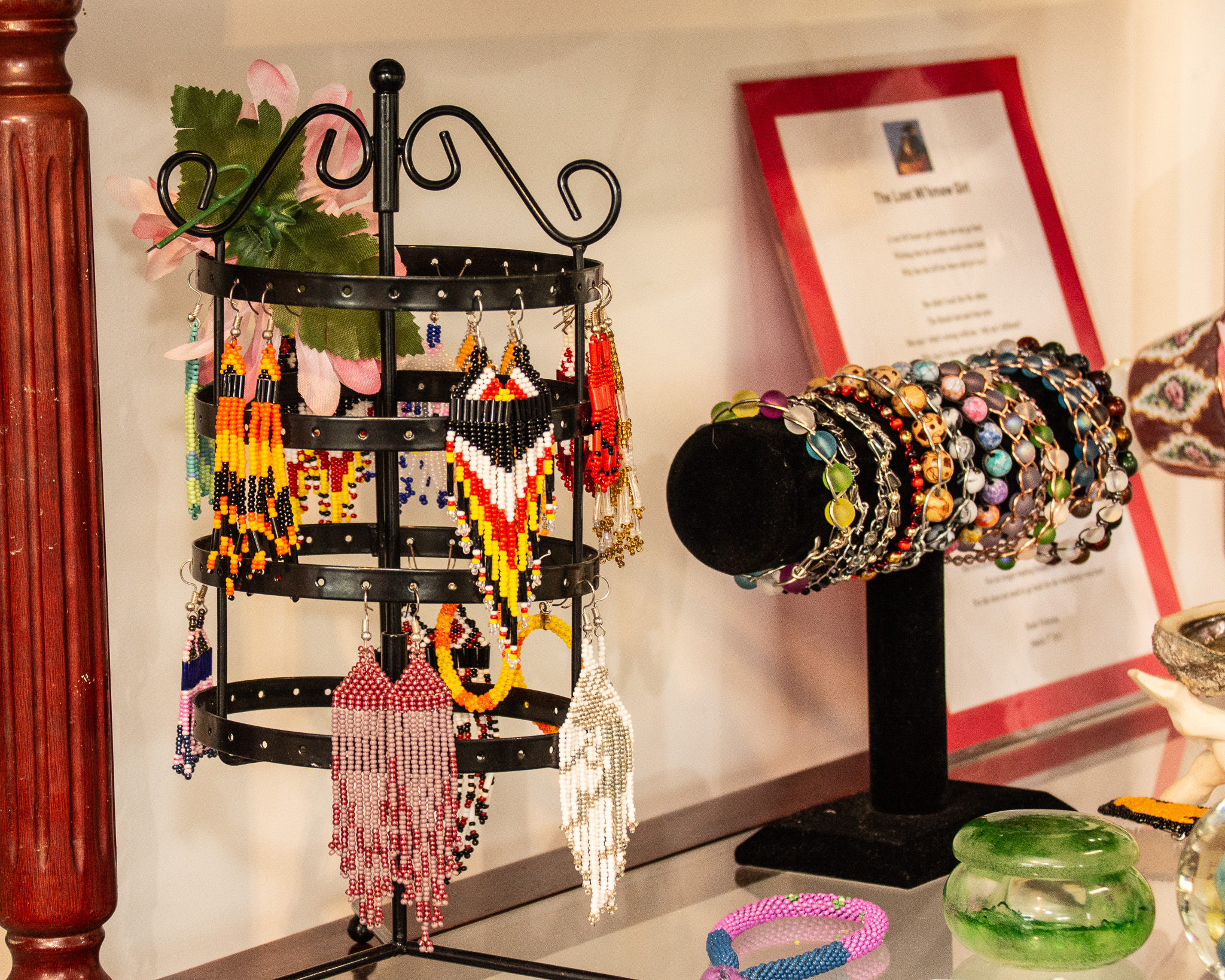
Three important values
Three things make her work valued: professional quality, customization, and affordability.
Her work is clearly to professional standards from the broad selection of materials to the serged seams (no raw edges to material). “A lot of people are very surprised when they get (their order),” she said about her quality. “You know, they look like they were bought from a store.”
And there is no end to the customization, from the fabric to the pattern to, of course, the colours of ribbon. She can also do either embroidery or Cricut produced images to add to the piece. And she can do all of it with a quick call. One of the reasons is how far many people would have to travel to visit her shop.
But despite the excellent quality and customization, she still insists on affordability. She said, “A lot of people say I should up my prices. I implement all the costs and I pay myself. But I like affordable stuff.”
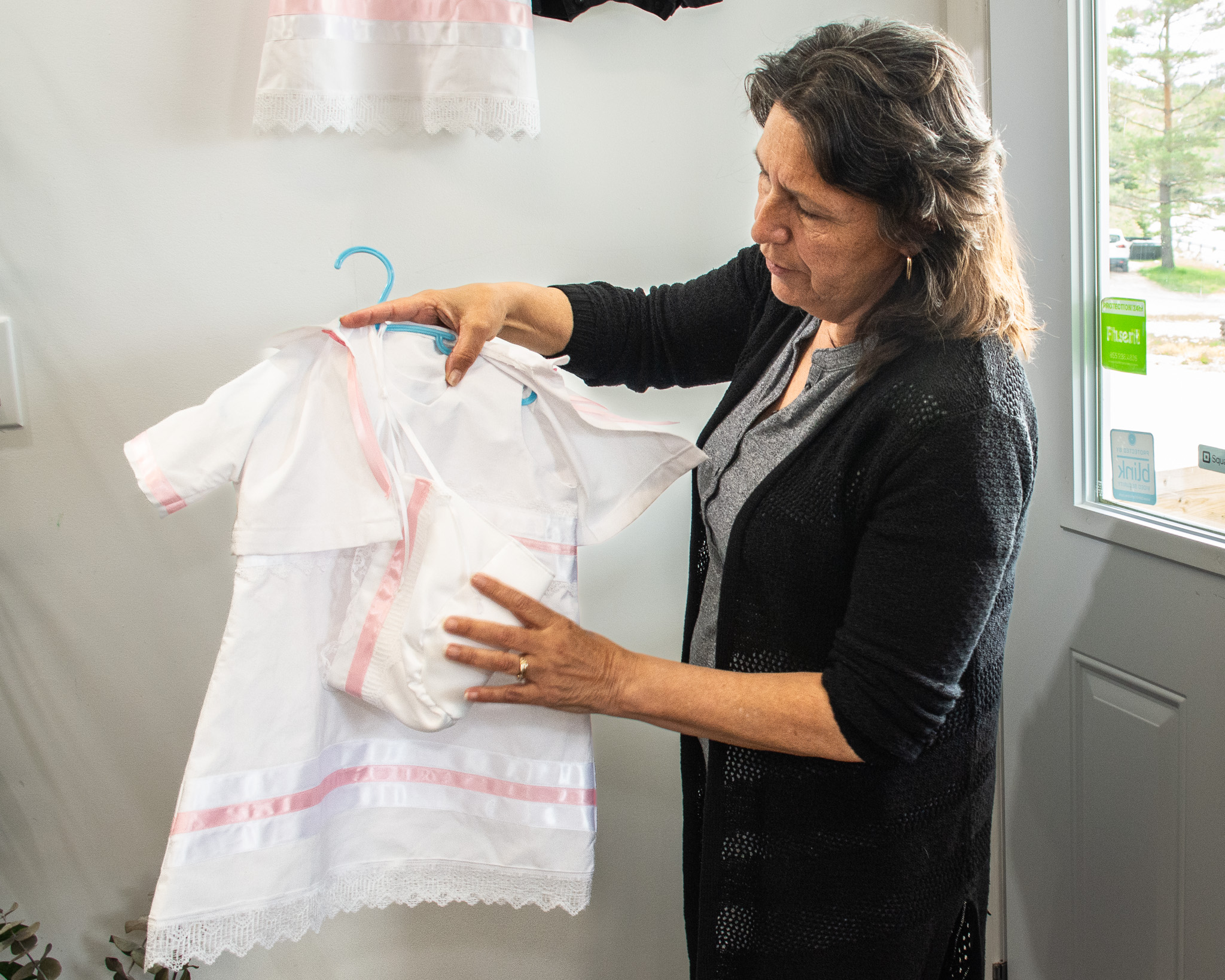
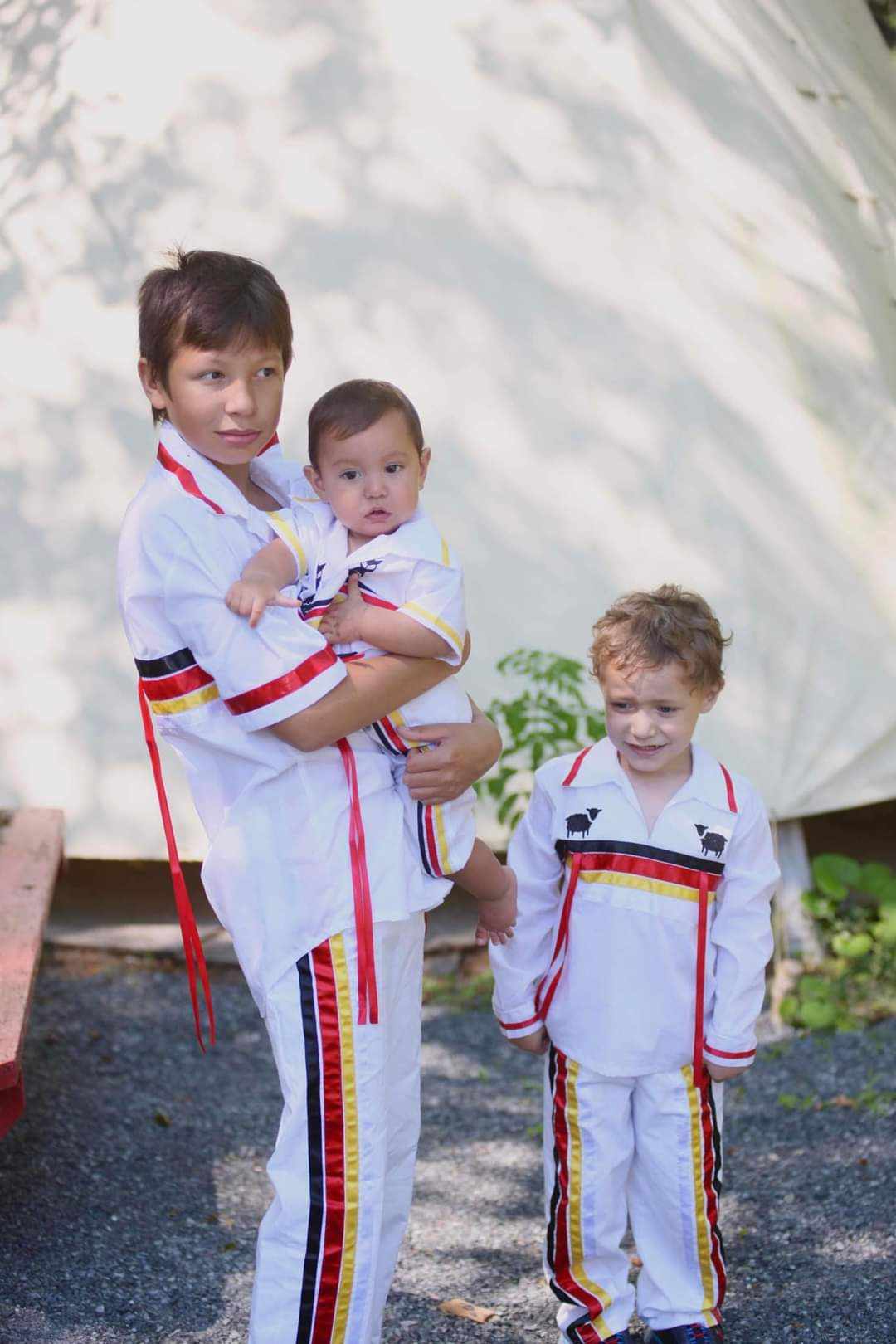
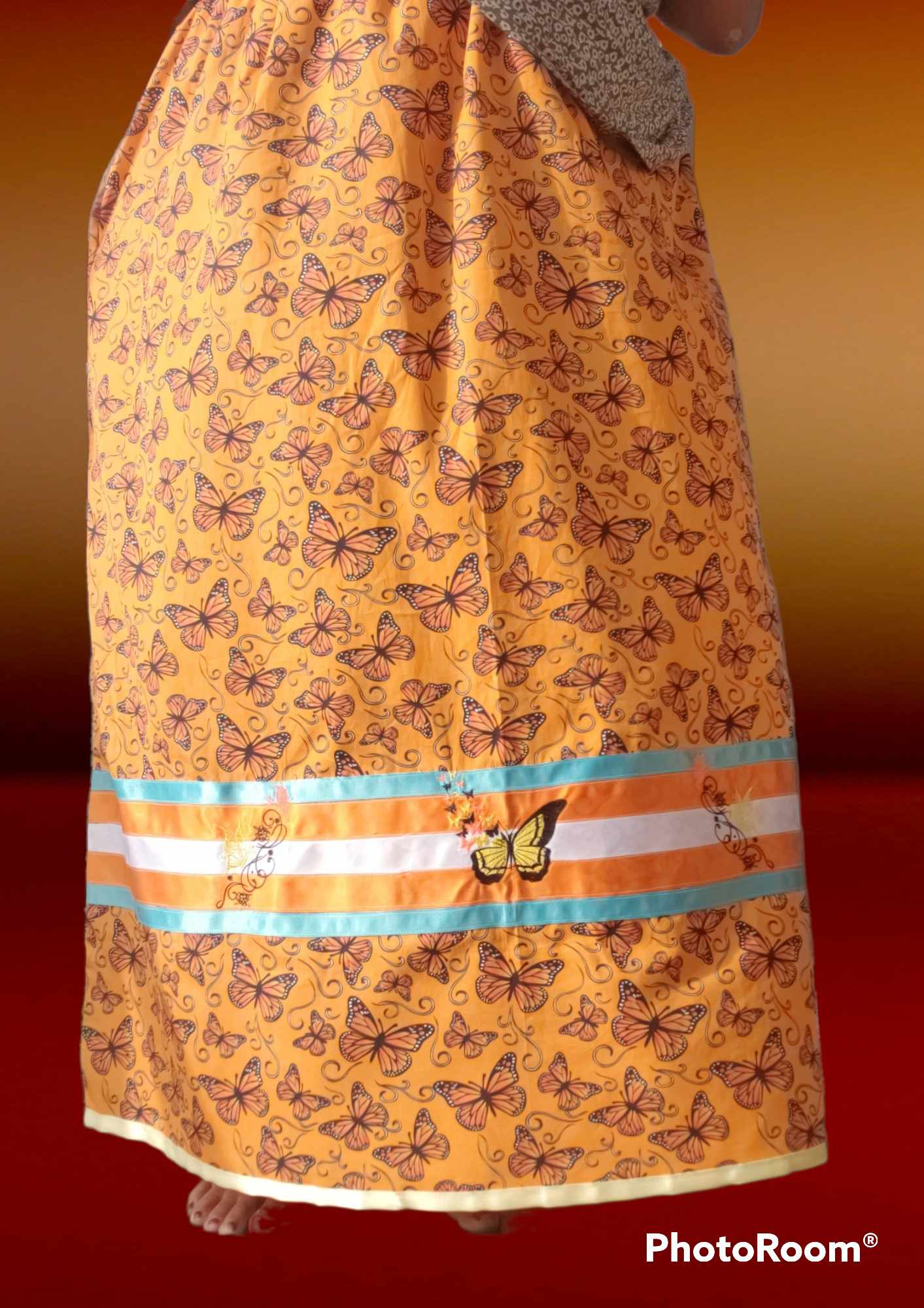
Boundless energy
“I have my hand into everything” also testifies to her boundless energy. It’s really hard for me to sit,” she says, “ I like to move. I have to keep moving my hands.” She has certainly put it to good use.
She tells us the story of how she had been invited to a Christmas sale at Membertou and she had no children’s skirts. “And I said I have nothing so I just sat down and went full blast with it.” She made 30 skirts in one night. My husband said “I can’t believe you did all those.’”
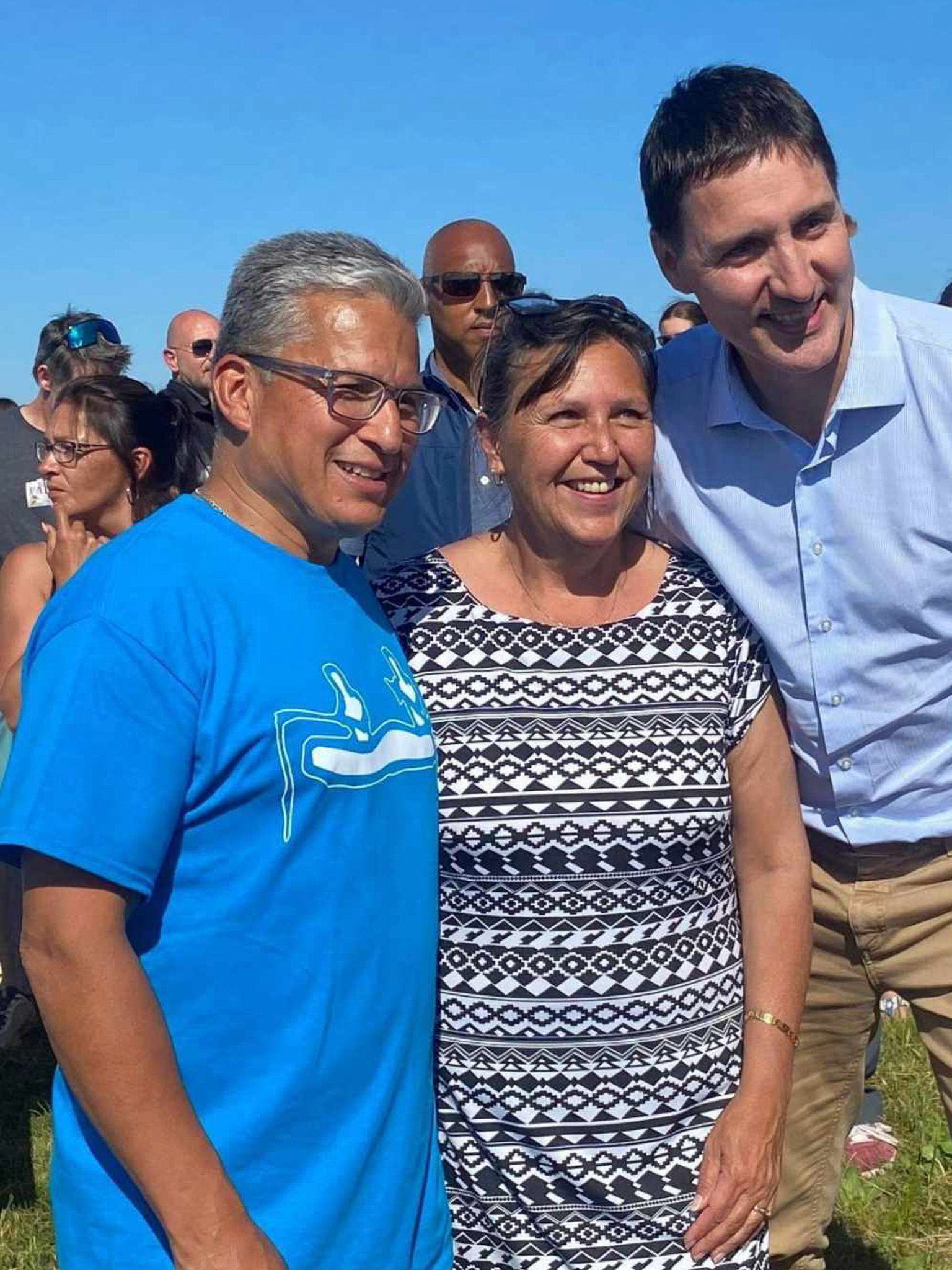
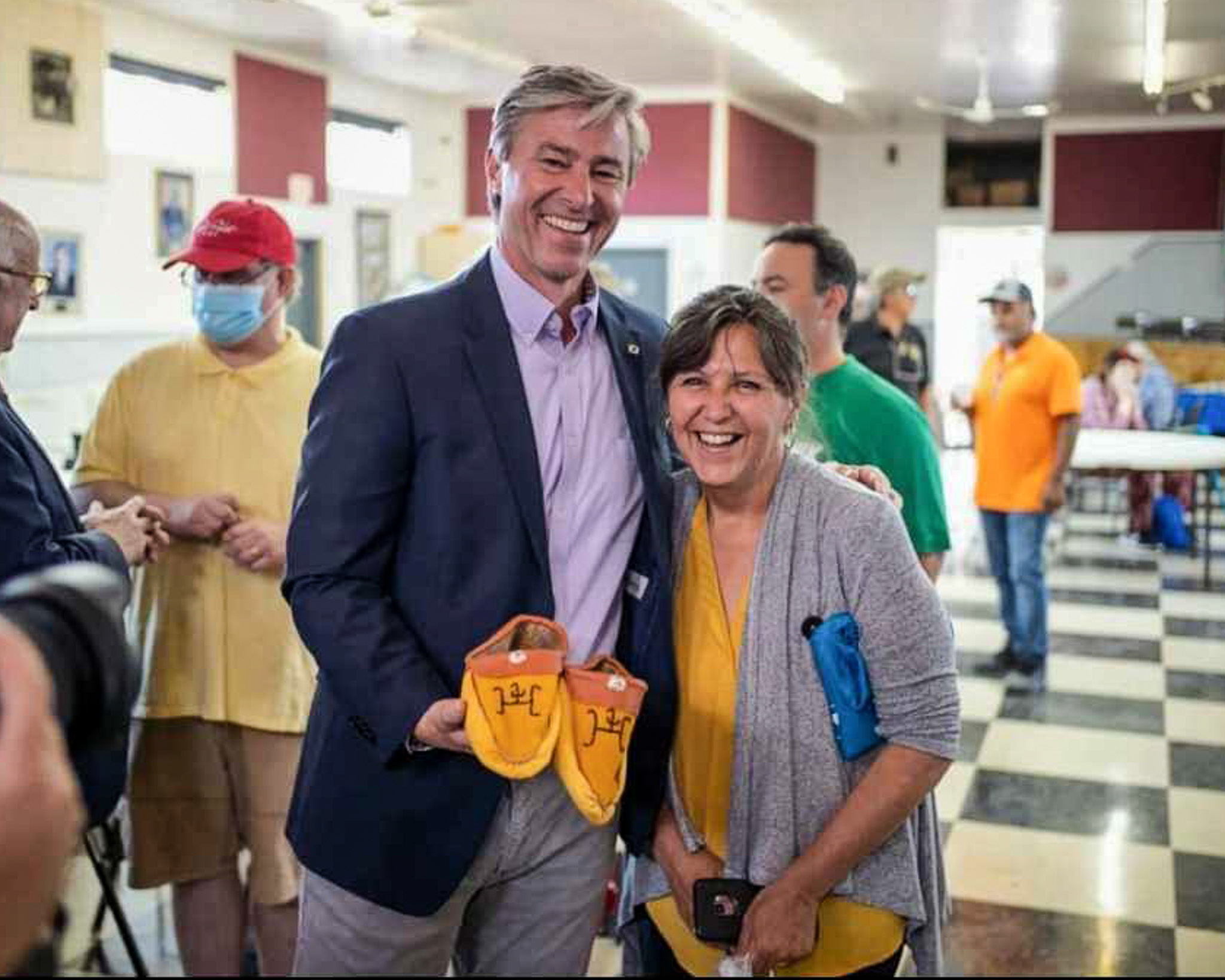
Then there’s the time last year when she was hit with a surprise order for 30 pairs of moccasins for visiting dignitaries celebrating the Mi’kmaw Language Act. To say the least, it was a rush order. “Last summer the chief came to see me and he said, ‘I need 30 pairs of moccasins.’ I said, ‘ Wilbert (Chief Wilbert Marshall) you’re supposed to come about a month early to give me time.’ So, I had to recruit people and teach them how to make moccasins.”
She got the support of family, including her husband, Byron Johnson, whom she taught to do the straight sewing of the moosehide moccasins. She also recruited some nieces. The order got filled on time and the recipients were chiefs from across Canada plus dignitaries such as Prime Minister Justin Trudeau and Nova Scotia Premier Tim Houston and Nova Scotia’s Lieutenant General Arthur LeBlanc. “They sent a letter of appreciation for my moccasins,” she said.
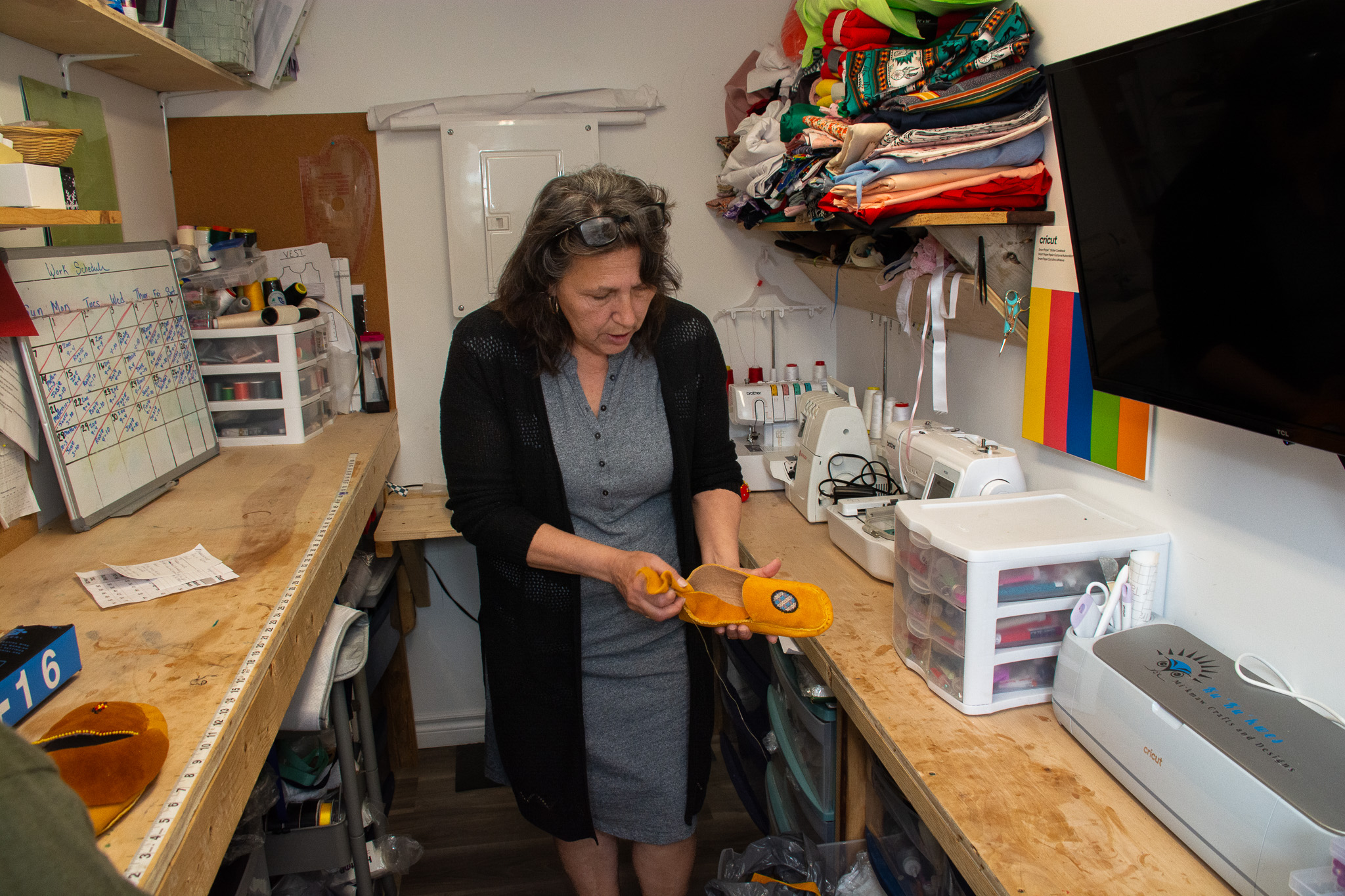
The work room
“This is my work room over here,” she said, bringing us to the back of the shop. “My tiny little work room. This is where we create and develop.” The room is about six feet across and runs the 12 foot width of the back end of the shop. Rosie’s station is at the end where there are four machines. There is an embroiderer, two sergers, and her main sewing machine, a Singer Futura. “This is the one I use all the time. If she goes down I go down.”
The room is plenty for one or two people, but if there is a big push of any kind, then it must get close in there. The simple truth is, she said, “I need a bigger workshop. I can use this for something else.”
Trading, borrowing, culture appropriation and QR codes
Rosie has no hesitancy about how many of the crafts she makes are traditions of other Indigenous groups. “We borrow. It’s all open to the fact that we all borrow. The dream catcher comes from out west,” she said. The Ojibwe began the dream catcher and the Sioux started the feathered headdress. This borrowing was true even before Europeans arrived and is a function of trading. “But you know, back in the day, before the Jesuits came in, they (the Mi’kmaw) did a lot of trading.” Rosie said Mi’kmaw items have been found as far south as what is now Washington DC and possibly to New Mexico.
Natives making items from other Native traditions is fine. The problem is non-Natives passing off imitations as authentic Native crafts. Of course, knowledge of how to make any kind of craft is easy to come by. “Anything you want to know is on the Internet,” she said. Rosie is part of a group that is trying to stop this profiting from culture appropriation by developing a QR code system.
If the group has its way, QR codes or Quick Response codes, will be placed on authentic Native merchandise and so the potential customer can scan it and access information like the artisan’s bio, the item’s tradition and history.
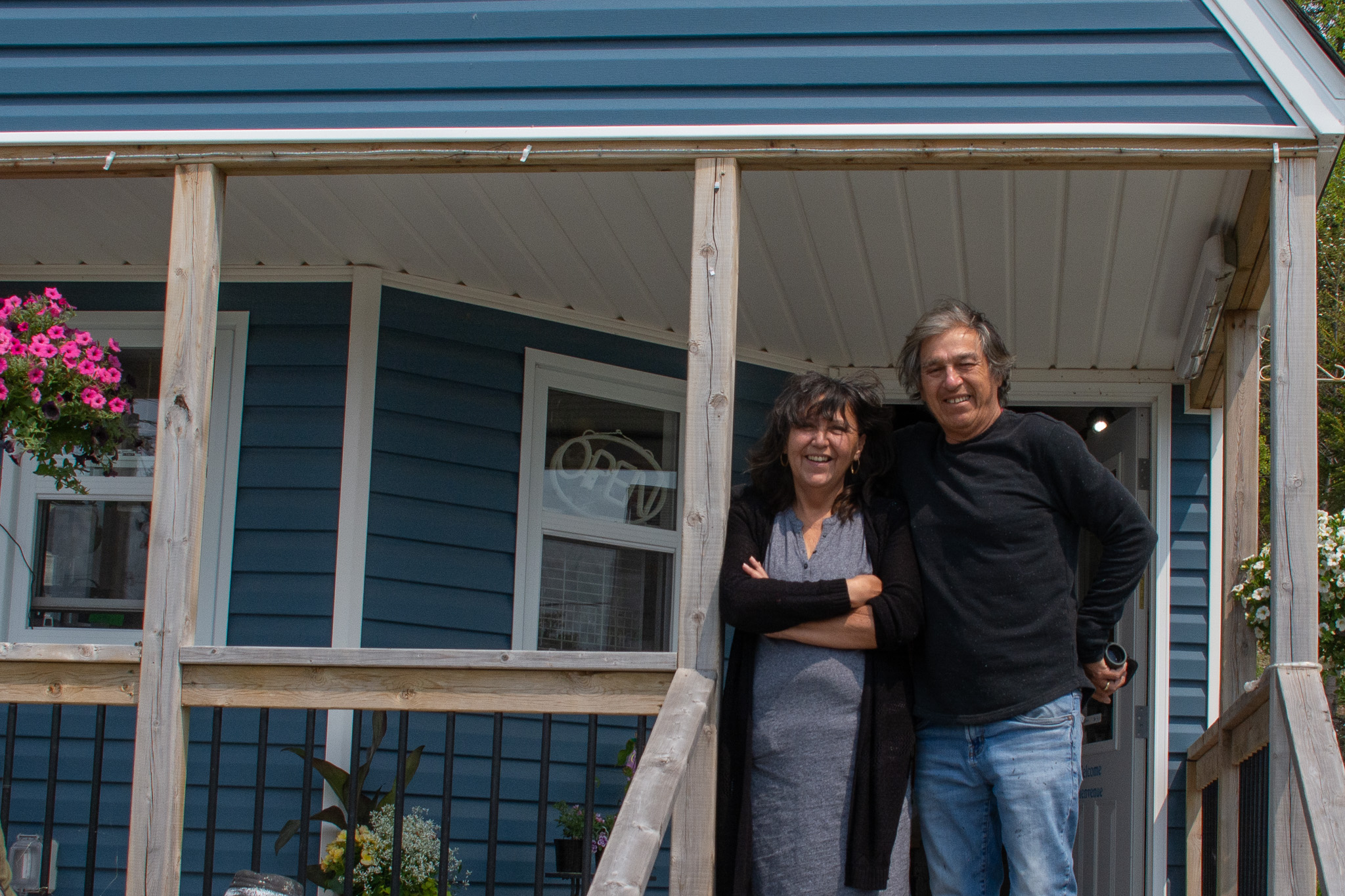
De facto cultural ambassador
Like any artisan of Native crafts, Rosie has become an informal ambassador for her culture. She gets walk-in customers from a lot of places. “I do have a guest book. We’ve had so many people,” she said, from Connecticut, Florida, Germany, Australia. And people want to know about her Mi’kmaw culture, about Potlotek —or Chapel Island, as many still refer to it.
“A lot of people want to know about the orange shirt, they want to know about residential schools, they want to know about the red dress. They hear it, but they don’t know about it. And when they have that physical item, it makes them want to learn more.”
She says people will stay an hour, or even two asking questions. Her solution: “I am in the process of making a pamphlet.” In it she will answer some of the most common questions. I suspect, though, they will just have even more questions for her.

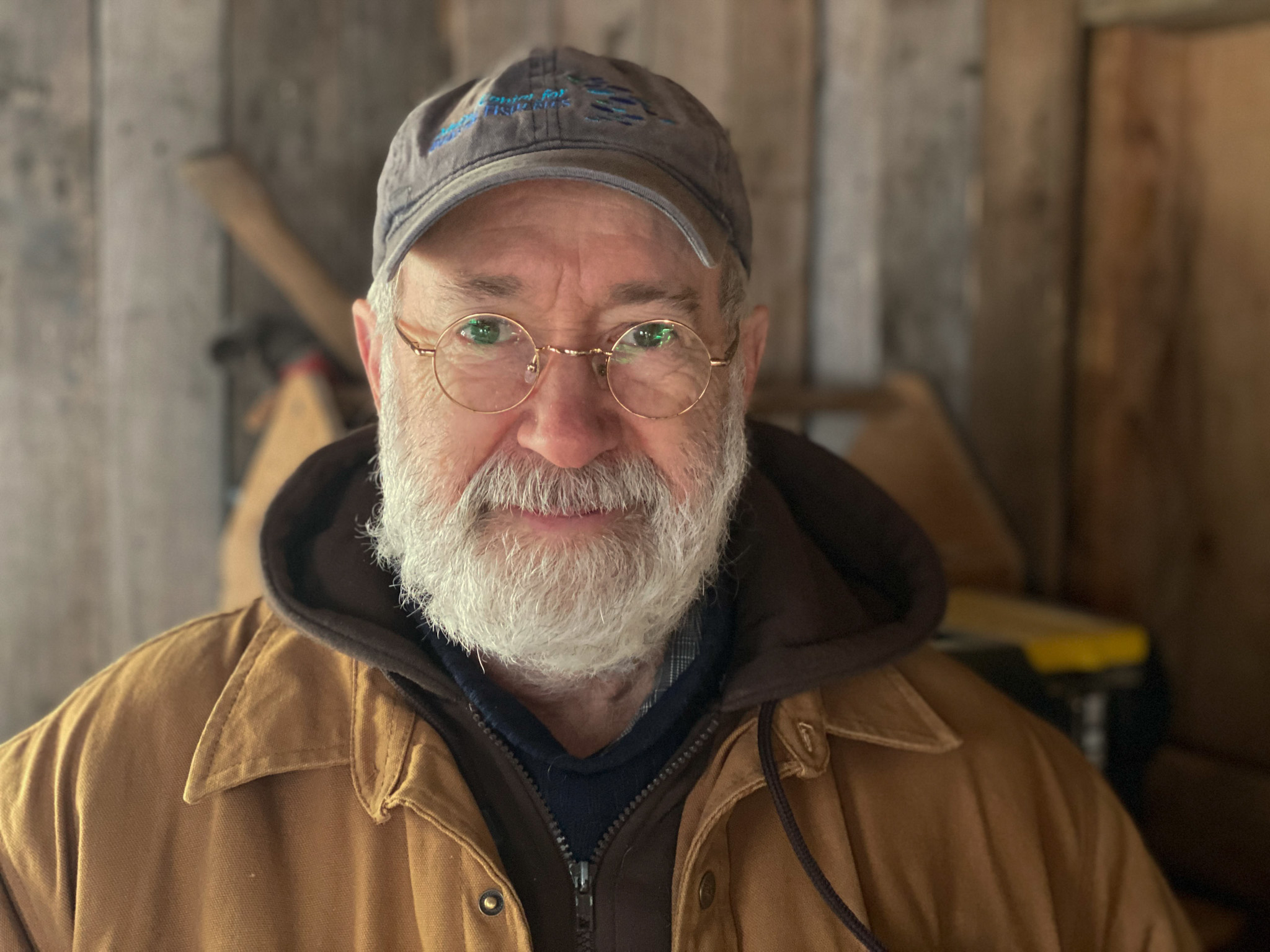
Author details
Archie Nadon, writer and photographer, left Ontario in 76 dreaming of living by the sea. In 2021 it finally happened.
